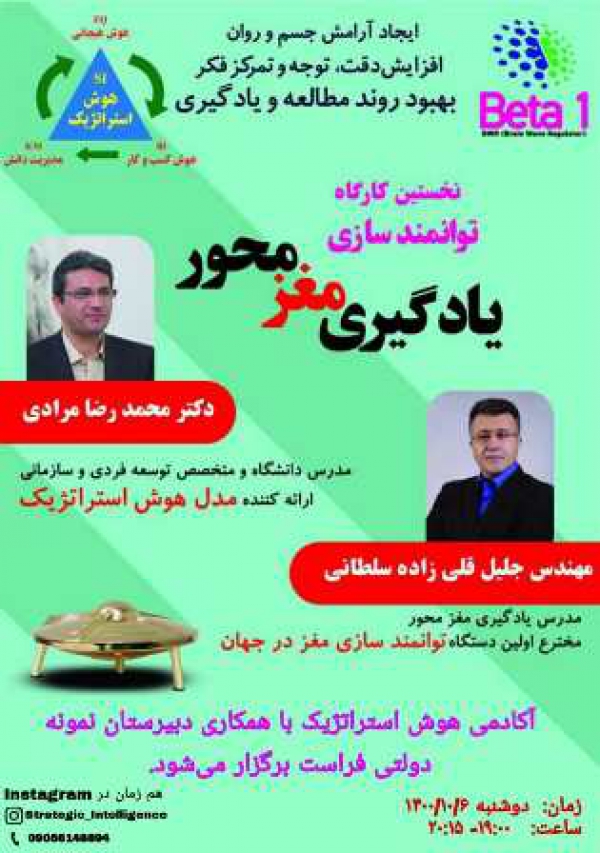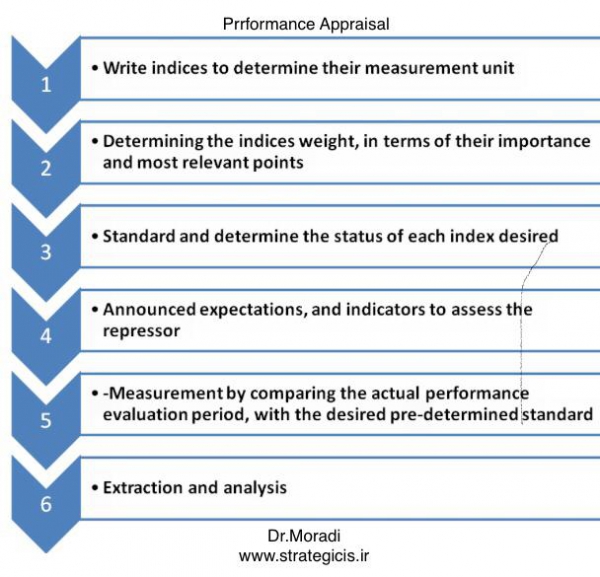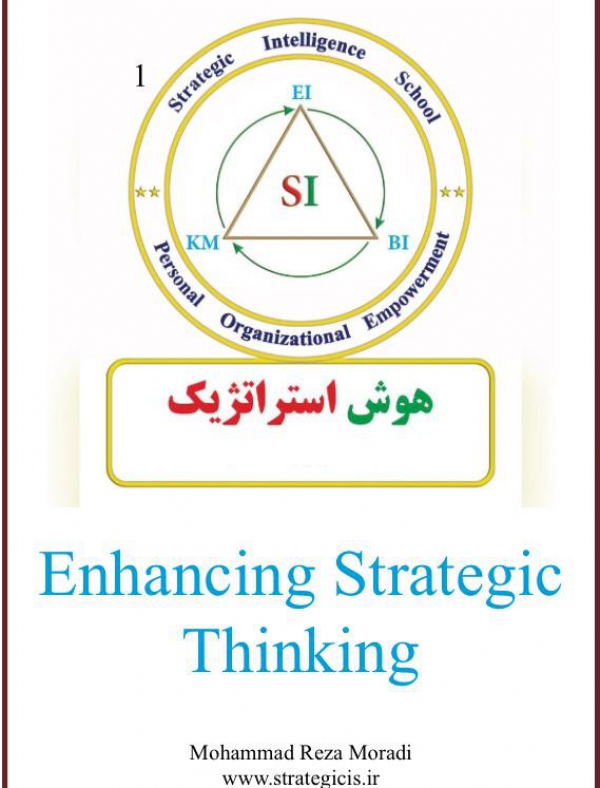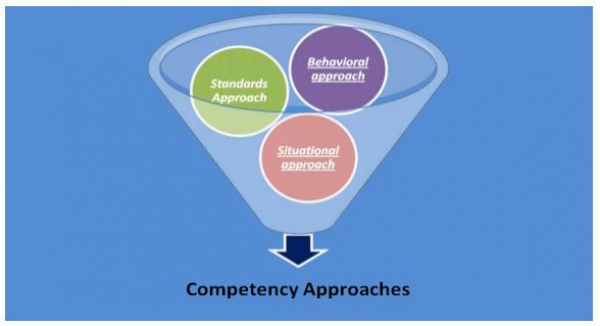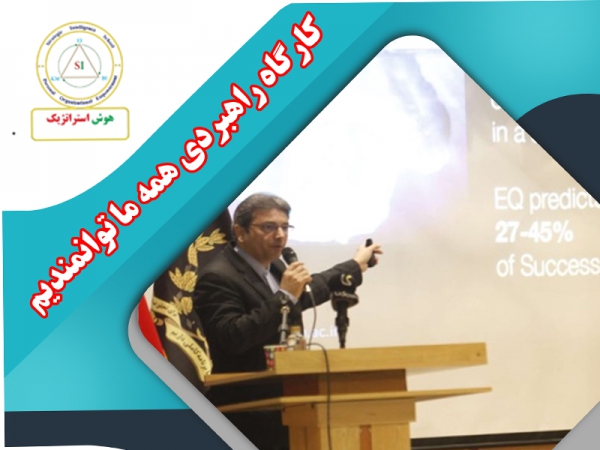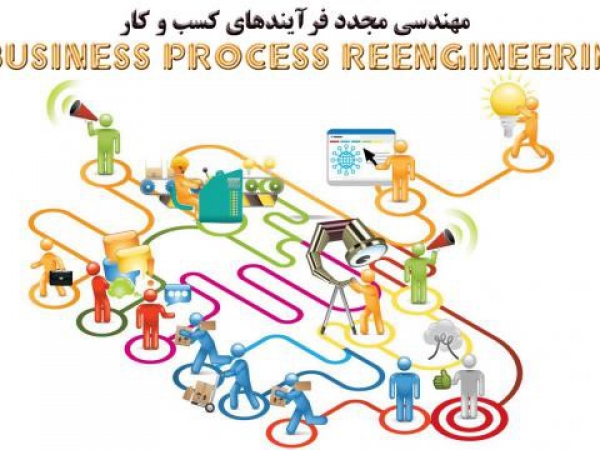
وبینار:
"توسعه فردی و بهبود عملکرد یادگیری با استفاده از تکنولوژی نوین توانمندسازی مغزمحور"
- هدف:
آشنایی ابتدایی با راهبردهای توسعه فردی و حل مسائل عملکردی
معرفی تکنولوژی نوین بتاوان (دستگاه ساخت مشترک ایران و نروژ) بعنوان یکی از وسایل توانمندساز آموزشی بهبود عملکرد امواج مغزی
- ضرورت و اهمیت:
مشکلات ناشی از بیماری کرونا در دوسال اخیر تغییرات اساسی در شیوه زندگی همگان داشته و علاوه برآن بر عملکرد یادگیری و افت آموزشی دانش آموزان و همچنین تغییرات رفتاری آنان تاثیر بسزایی را گذاشته است.
دوشنبه 6/10/1400
ساعت 19 الی 20/15
Www.skyroom.online/ch/ferasat20/shora
اینستاگرام strategic_intelligence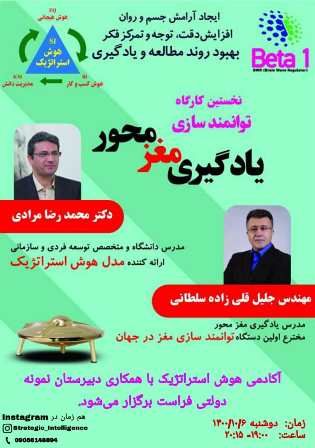
THE DEGREE FEEDBACK 360 AS A PERFORMANCE MANAGEMENT TOOL FOR PERFORMANCE APPRAISAL AND IDENTIFY COMPETENCY (ESPECIALLY MANAGERS)
Dr.Mohammad Reza Moradi
www.strategicis.ir
Take Strategic To: The Barriers To The Effective Implementation Of Human Resource
Information System
- 0.0 Abstract
- 1.0 Introduction
- 2.0 Objective of Paper
- 3.0 Motivation for Selecting this Topic
- 4.0 Significance of the Project
- 5.0 Literature Review on HRIS and its Barriers to Implementation
- 5.1 HRIS Defined
- 5.2 Benefits of HRIS to the Organisation
- 5.2.1 General Benefits of HRIS
- 5.2.2 Administrative and Strategic Benefits of HRIS
- 5.3 Barriers to the Implementation of HIRS at the Organisation
- 5.3.1 Cost of Setting up an HRIS System
- 5.3.2 Lack of Money and Support from the Top Management
- 5.3.5 Inability to Convince Top Management to Adopt HRIS
- 5.3.6 Insufficient Adaptation of HRIS to HR Processes
- 5.3.7 Lack of User Training
- 5.3.8 Formulation of Bad Policies and Procedures for HRIS
- 5.3.9 Lack Privacy Issues for Implementation of HRIS
- 5.3.10 Improper Validation of Data Entry
- 5.3.11 Inadequately Addressing Operational Issues
- 5.3.12 Other Issues Barriers to Implementation of HRIS
- 6.0 Project Methodology
- 6.1 Internet Research
- 6.2 Library Research
- 7.0 Analysis of Findings
- 8.0 Discussion
- 9.0 Conclusion
- 10.0 Reference List
0.0 Abstract
Implementing of Human Resource Information System (HRIS) is one of the main goals of strategic management in learning oriented organizations. Learning oriented organizations to achieve competitive advantage look at to its employees as a strategic resource.
In this paper, I identify and review the barriers to the effective implementation of human resource information system. In this review such topics as: strategic and administrative advantages to identify these barriers, the costs of implementation of human resources information system, and we mention to lack of supported of senior managers in organization. Thus, look at strategic this issue, we conclude that identify and reduce barriers of human resource information system, we can create the proper context for planning and control issues of human resource with strategic objectives.
1.0 Introduction
In these present times, information technology is being used to improve organisational effectiveness and the human resource practices have been automated and turned into an information system that is tremendously beneficial to the organisation. HRIS is a tremendously beneficial tool that can be used by organisation in perfecting the HR function of the organisation. However, implementation a HRIS to get all these benefits is not very easy and there exists many barriers exists in relation to the implementation of HRIS. These barriers will be discussed in the project and solutions to eliminating these barriers will be proposed.
2.0 Objective of Paper
The main aim and objective of this project is to conclusively determine the barriers to effective implementation of Human Resource Information System (HRIS) at an organisation. It is observed here that many organisations are looking to benefit from the use of HRIS but are simply unable to due to the fact that there are so many barriers that exists during the implementation of the HRIS. It is hence the objective of this paper to uncover these barriers so that organisations know what they are up against when they are looking to implement the HRIS.
3.0 Motivation for Selecting this Topic
The ultimate reason why this topic was selected was due to the fact that this HRIS is a very important facet of HR at the organisation and its successful implementation might enable the organisation that adopts it to gain a strong competitive advantage via the use of its human resource. Making an identification of barriers that impede the implementation of HRIS would be a positive step towards devising solutions in order to eliminate these problems.
4.0 Significance of the Project
This project is significant because it can help make an identification of the various barriers to the effective implementation of HRIS and by doing this, organisations would be able to understand the various barriers towards the implementation of HRIS. By acquiring such knowledge, it is possible for organisation to be to solve these problems in implementation of HRIS and this would assist the organisation to use of human resource to achieve a competitive advantage.
5.0 Literature Review on HRIS and its Barriers to Implementation
5.1 HRIS Defined
The HRIS can be defined as the “the composite of databases, computer applications, and hardware and software” which is needed to “collect/record, store, manage, deliver, present, and manipulate data” for the purposes of human resources”. Essentially, HRIS has grown very highly in popularity since the 1960s and in a survey that was conducted on this topic, it was found that nearly 60% of Fortune 500 companies had utilized HRIS for the purposes of supporting day to day HRM. It has been theorized by that a HRIS is a system that can be used in order acquire, store, manipulate, analyse, retrieve and distribute information concerning the human resource of the organisation.
5.2 Benefits of HRIS to the Organisation
It is appreciated here that businesses are normally prepared to undertake changes if they can see a competitive advantage in doing so and many of these have a number of problem relating to the implementation of new technologies such as HRIS and some of the reasons for this s the lack of sufficient capital and skills. It is because of this a number of companies are not keen on implementing HRIS. They are only will to do so if they are aware of the advantages that its implementation would bring to the organisation. There are a number of benefits of an HRIS and these will now be discussed.
5.2.1 General Benefits of HRIS
Among the main benefits of the implementation of HRIS is that it improves the accuracy of day to day operations, it provides very fast access to important information and it also saves costs. It is theorized by Lederer (1984) that accuracy and timeliness of HRIS can be described as very important when it comes to operating, controlling, and also the planning activities in HR have demonstrated that HRIS is capable of contributing towards cost reductions, innovation and quality/customer satisfaction and innovation.
5.2.2 Administrative and Strategic Benefits of HRIS
Asafo, A, A. Boateng (2007) has essentially listed out a number of administrative and strategic advantages that can be enjoyed by the organisation that uses HRIS. In the same time, Beckers and Bsat (2002) had pointed out 5 reasons why companies are required to use HRIS and these are listed below:
1. Elevation of competitiveness via the improvement of HR operations
2. Production of a larger number of number and variety of HR-related reports
3. Change in the focus of HR from the processing of transactions to strategic HRM
4. Making employee’s part of HRIS
5. Reengineering of the entire HR function of companies
It was the opinion of Sadri and Chatterjee (2003) that when the HRIS function was computerized, there was much faster decision making in relation to the development, administration and planning of HR due to the fact that data is capable of being stored, updated, classified and analysed. It was also noted here that HRIS can have the effect of strengthening the character of the organisation.

Figure 1: HRIS features usage (Ball, 2001)
5.3 Barriers to the Implementation of HIRS at the Organisation
There have been a number of barriers that have been responsible in preventing the effective implementation of HRIS in an organisation. The most significant and serious barriers to the implementation of HRIS will be discussed now.
5.3.1 Cost of Setting up an HRIS System
It has been stated by Beckers and Bsat (2002) that the cost associated with setting up and maintaining a HRIS can be significantly high and this is regarded as a major obstacle in the successful implementation of a HRIS. In some cases, the organisation is unable to continue with the implementation of the HRIS due to the fact that they might have run out of resources or simply cannot afford to continue with the implementation of the HRIS.
5.3.2 Lack of Money and Support from the Top Management
In a survey that was conducted, it was found that the greatest barrier in the adoption of HRIS was the lack of financial support. It has also been pointed out by some researcher that another barrier towards the effective implementation of HRIS was the lack of support from top management. These served as very large barriers towards the gaining the full potential of an effective HRIS.
What can be discerned here is that the top management normally takes primary responsibility for giving enough financial support and sufficient resources for building a successful HRIS. The insufficiency of financial support and resources would almost certainly cause for the implementation of HRIS not to achieve success.
It is understood here that comprehensive HRIS implementation would need a sizeable budget in order to implement and maintain the HRIS. Where the top management is not capable of understanding the method by which HRIS is able to bring advantages to the company, then they are highly unlikely to allocate valuable resources for the implementation effort.
It is submitted at this point that the lack of commitment from the top management is another significant and widely cited barrier towards the implementation of HRIS in small companies. Hence, it is observed here that the support of the top management is critical to the successful implementation of HRIS.
What is clearly needed here is for more promotional efforts and also an action plan to be able to demonstrate the concrete advantages of utilizing HRIS and this is necessary if the top management is to be enlightened of the benefits that it can achieve through the implementation of HRIS.
5.3.5 Inability to Convince Top Management to Adopt HRIS
At the pre-implementation stage of HRIS, it is submitted that the main barriers to effective implementation of the main challenges would be to convince the top management, to get the best deal from vendors and to match the software to the organisational processes. Sometimes, the management is not convinced that the HRIS is needed and hence would stall its implementation. Under such circumstances, the management would be required to be presented with information that demonstrates that an investment in an HRIS would bring in long term benefits.
5.3.6 Insufficient Adaptation of HRIS to HR Processes
Before the implementation of HRIS, the major factor here would be the adaptation of the HR processes and despite the fact that custom software would be able to address specific needs; the main objective of the HRIS would be make improvements to the existing system. It has been found by Singh (2002) that the customization of HR is the least important concerns as a number of organisations make a decision a priori, not to customize (Krishnan and Singh, 2006).
Being unable to adapt HRIS to HR processes would be another barrier towards its implementation. In order to ensure the smooth implementation of the HRIS system at the organisation during the implementation stage, care needs to be taken during the project management aspects such as getting resources ready, preparing the right people, legal requirements, communication matters etc (Krishnan and Singh, 2006). It is submitted here that these are the issues that might arise due to the fact that people might be already set in their ways or might not want to change their traditional way of doing things and corporate processes and procedures.
In order to avoid such a barrier to implementation, it is recommended that the teams members be encouraged to challenge old ways of thinking and a clear project plan would be required to solve these issues comprehensively (Krishnan and Singh, 2006).
5.3.7 Lack of User Training
A very important factor in the implementation of HRIS is user training. It has been found here that HRIS features are not normally used and this stems from the lack of knowledge of the HR managers concerning the complete features, the difficulty in using the system and also the lack of sufficient awareness of the computer personnel (Krishnan and Singh, 2006). Certain users are unable to use the system due to the fact that they have insufficient training and this represents a barrier in the post implementation stage. It is of empirical importance that users be trained with the adequately so that they would be able to use the system effectively.
5.3.8 Formulation of Bad Policies and Procedures for HRIS
In addition to this, it is submitted that the next major issue that serves as a barrier to the implementation of HRIS is the formulation of bad polices and procedures for HRIS. It is submitted that online database and information causes concerns in terms of misuse of data and also data security. It is learnt that the online data base and information causes a certain amount of concern in relation to the misuse of data as well and also data security. It is very important for HR policies to be explicit in terms of monitoring of data by the employers and the usage terms of the internet (Krishnan and Singh, 2006).
During the post implementation stage, this stage is essentially focused on the performance of HRIS, its maintenance, its upgrading and replacement in accordance to the new needs and technological advancements (Krishnan and Singh, 2006). Hence proper policies have to be formulated in all these areas so as to ensure that the implementation and acceptance of the HRIS is without any frills.
5.3.9 Lack Privacy Issues for Implementation of HRIS
It is very important to address the privacy concern of the employees in relation to password protection procedure and setting the proper access. If not done properly this would cause a serious barrier to the implementation of HRIS.
5.3.10 Improper Validation of Data Entry
Another barrier to implementation comes in the forms of improper validation of data entry and the requirement for specific data, which should be validated during the implementation stage. It is appreciated here that is a very important factor that must be addressed as any slack in the process would cause for a redundancy in data and data errors in the system (Krishnan and Singh, 2006).
5.3.11 Inadequately Addressing Operational Issues
There are number significant operational issues that need to be address so that they do not turn into a barrier to the effective implementation of HRIS. In essence, these issues that are of concern include personnel, time, system malfunctions, inadequate resources, and problems of coordination with other departments. It is submitted that the performance measurement of the HRIS is a very important factor that during the post implementation stage (Krishnan and Singh, 2006).
The change that is brought about by the HRIS must be anticipated and hence it is necessary for the responsibilities and competence of HR managers to be redefined in order to meet HRIS requirements and these would typically include technical competencies, consulting capabilities and cost consciousness (Krishnan and Singh, 2006). What can be said here is that the successful implementation of HRIS needs comprehensive planning as well as monitoring.
5.3.12 Other Issues Barriers to Implementation of HRIS
In a survey that was conducted, it was indicated that the largest problem in the management of HRIS included the lack of staff, the lack of budget, issues with time management, the requirement to work with other departments and the lack of support for information technology (Ngai and Wat, 2004). It was also indicated that other challenges towards the successful implementation of HRIS was the lack of sufficient knowledge on HR by the designers of the system and also the lack of application and solutions for HR users (Ngai and Wat, 2004).
Below is a summary of the observations that have been made in relation to the barrier and success factors in the implementation of the HRIS at various stages of implementation.



6.0 Project Methodology
In most projects, the methodology that can be used in order to gather research data can be divided into primary research and secondary research methodologies. The methodology that was used for the purposes of data collection for this project is the secondary research technique of internet research and library research.
6.1 Internet Research
This internet research was carried out in order to gather relevant and precise data that was used and processed for this project. A significant amount of research was carried out at online journal databases like Emerald Insight, ProQuest and Springer Link. These journal databases contained a wealth of articles relating to HRIS and related topics and thorough research was done at these databases. Internet research was also carried out on search engines likes Google, in which a number of articles were acquired and helped in the completion of this project.
6.2 Library Research
In addition to all of this, research was also carried out at the University library and information was obtained from a number of books relating the HR and HRIS.
7.0 Analysis of Findings
From an analysis of the above, it is understood here that there exist a number of barriers towards the implementation of HRIS at the organisation. These barriers are summarised to include the following:
1. Cost of Setting Up an HRIS System
2. Lack of Money and Support from the Top Management
3. Inability to Match Software to Organisational Processes
4. Lack of staff
5. Issues with time management
6. Requirement to work with other departments
7. Lack of support for information technology
8. Insufficient Adaptation of HRIS to HR Processes
9. Lack of User Training
10. Formulation of Bad Policies and Procedures for HRIS
11. Lack Privacy Issues for Implementation of HRIS
12. Inadequately Addressing Operational Issues
Of all these barriers to the successful implementation of HRIS were the lack of monetary support and the lack of commitment from the top management. However, this does not mean that the other barriers are not important as they are just as important and are capable of stalling the implementation of the HRIS at the organisation at three main stages which are during the pre-implementation stage, the implementation stage itself and the post implementation stage. At each of these stages, barriers to the effective implementation of HRIS can spring up and cause for the project to stumble. The discussion above, a number of proposals were made in terms of the way in which the organisation is able to effectively eliminate or prevent these barriers from becoming an impediment towards the effective implementation of the HRIS. By following the recommendations, the implementation of HRIS would be as smooth as possible.
8.0 Discussion
HRIS is a very important tool that can be used to enhance the HR function of the organisation and would be able to help the organisation improve its HR function through the variety of benefits that HRIS has to offer. This project has uncovered a number of issues relating to the implementation of HRIS at the organisation and it was found that it care is not taken, the implementation of HRIS can go awry and success would not be achieved and the organisation would not be able to derived all the benefits that the HRIS can offer to the organisation.
In this project, all the relevant barriers towards the successful implementation of HRIS have been discussed. By bringing these barriers to light, it is submitted that the organisation would be able to know what to expect when they try to implement and HRIS without taking the necessary steps to prevent these barriers before they compromise the implementation of the HRIS. It is submitted here that financial constraints and lack of top management commitment has been the main obstacle to the successful implementation of HRIS at the organisation. Hence, it is very important for the management to be presented about the benefits that accrue to the organisation by virtue of the implementation of the HRIS. Only them would it appear justified for the management to commit time and money to invest in the implementation of HRIS.
9.0 Conclusion
In conclusion, it is submitted that the implementation of HRIS at the organisation is a very important step towards the betterment of the organisation in the long term. However, a number of barriers towards the effective implementation of HRIS have been uncovered and these barriers are theorized as being major impediments towards the successful implementation of HRIS. It is believed that some of the recommendations made would be very effective in assisting the organisation to pave the way for a smooth implementation of the HRIS. Thus, look at strategic this issue, we conclude that identify and reduce barriers of human resource information system, we can create the proper context for planning and control issues of human resource with strategic objectives.
10.0 Reference List
1-Ball K, 2001 “The Use of Human Resource Information Systems: A Survey” Personnel Review, Vol 30, No.6, 2001. Pp. 677-693
2- Boateng, Asafo A. A. (2007) “The Role of Human Resource Information Systems (HRIS) in Strategic Human Resource Management (SHRM).Master of science Theses in Accounting, Swedish School of Economics and Business Administration. August 2007
3-Liao, Yao-Sheng (2005) “Business strategy and performance: the role of human resource management control.” Personnel Review. Vol. 34, No.3, 2005. Pp. 294-309
4-Hosie, Peter(1996) “Promoting quality in higher education using human resource information systems.” Quality Assurance in Education. Vol. 3 No. 1, 1995, pp. 30-35
5-Krishnan S and Singh M, 2006 “Issues and Concerns in the in the Implementation and Maintenance of HRIS” Indian Institute of Management, Research and Publications, W.P.No.2006-07-01
6- Maguire, Stuart. Redman, Tom (2007) “The role of human resource management in information systems development” Management Decision Vol. 45 N0. 2, 2007 pp. 252 -264
7-Mossholder, Kevin W. Richardson, Hettie A. Settoon, Randall P (2011) “Human resorce systems and helping in organizations: A relational perspective.” Academic of Management Review. Vol. 36 No. 1, 2011, pp. 33-52
8-Ngai E.W and Wat F.K, 2004 “Human resource information systems: a review and empirical analysis” Personnel Review Vol. 35 No. 3, 2006 pp. 297-314
9-Tansley, Carole. Newell, Sue. Williams, Hazel (2001). “Effecting HRM-style practices through an integrated human resource information system, An e-Greenfield site?” Personnel Review, Vol. 30 No. 3, 2001, pp. 351-370
10-Tansley, Carole. Newell, Sue (2007) “Project social capital, leadership and trust; A study of human resource information systems development.” Journal of Managerial Psychology. Vol. 22 No. 4, 2007, pp. 350-368
11-Tyrrell, Marc W.D (1999) “Surfing for success: The convergence of Human Resource Information Systems (HRIS)”. Paper presented at the 1999 Annual Meeting of the Canadian Anthropology Society (CASCA), May, 99, University Laval, Quebec City
Managers Succession Planning for Human Capital Development
Mohammadreza Moradi
آکادمی هوش استراتژیک با همکاری انجمن اولیا و مربیان دبیرستان نمونه دولتی فراست برگزار می کند:.
اریک فروم چند تیپ شخصیتی را مطرح کرد که زیربنای رفتار انسان هستند.
انتخاب و تصمیمگیری یکی از مهمترین ابعاد زندگی هر فردی است. انتخابهای ما تا حد بسیاری، تعیینکننده زندگی ما هستند.
هفت توصیه مدیریتی برتر
9 راه برای اینکه استرستان را کنترل کنید تا زندگی شادتری داشته باشید
سوال خیلی هاست که ایتالیایی ها با فرهنگی مشابه ما چگونه توانستند توسعه پیدا کنند؟ پاسخ من معمولاً این است که خودم هم دقیقاً نمی دانم ولی چهار نکته را می توانم بیان کنم:
عمده دلايل شکست کسب وکارها
محمدرضا مرادی* تغییرات مستمر در محیط کسبوکار و ارتباطات ناپایدار داخلی و بینالمللی در زمینههای مدیریتی، اقتصادی و سرمایهگذاری در سالهای اخیر، سازمانها و شرکتها را ملزم به برنامهریزی، نظارت و ارزیابی محیط درون و بیرون خود با تجزیهوتحلیل و بازخورد آنی اطلاعات حاصل از این تغییرات مواجه کرد.
" هيچگاه بهترين روش تنها يك روش براي اداره كردن منابع انساني سازمان نيست "
محیط کسب و کار کنونی، محیط تغییر و دگرگونیهای سریع است. این تغییرات باعث شده است که صاحبنظران در دهه های اخیر، بحثهای گسترده ای را در زمینه ضرورت توجه به عوامل محیطی در مطالعه سازمانها مطرح کنند. منظور از عوامل محیطی مجموعه ای از ویژگیهای قابل اندازه گیری محیطی است که به طور مستقیم یا غیر مستقیم توسط سازمان ادراک می شوند و بر عملیات آن موثر هستند. صرفنظر از تعاریف مختلف از محیط یا عوامل محیطی، مطالعه تاثیر تغییرات محیطی بر جنبه های مختلف سازمان از جمله ساختار سازمان از اهمیت فوق العادهای برخوردار است.
تغییر و توسعه وقتی اتفاق می افتد که هر شخص یا هر سازمانی خود بدنبال آن تغییر و توسعه باشد. زندگی شخصی و کاری هر یک از ما، با توجه به محیط پیرامونی آن هر لحظه دستخوش تغییرات خاصی است که نیاز به تفکر آینده نگر(تفکر استراتژیک) با برنامه ریزی استراتژیک دارد، این توانایی همان هوش استراتژیک است.
مهندسی مجدد فرآیند کسب و کار(BPR)، به معنای تفکر مجدد، بازطراحی رادیکالی(اساسی) فرآیندهای کسب و کار ،جهت بهبود چشمگیر براساس شاخص های کلیدی عملکرد (هزینه، کیفیت و سرعت و ...) است. ایده باز مهندسی فرآیند عبارت است از : کسب و کار موثرتر و کارآمد تر ، انعطاف پذیری و پاسخگویی بیشتر سازمانها برای سهام داران، مشتریان و کارمندان سازمان. به خدمت گرفتن ساختار سازمانی برای تسهیل گردش کار به شکل نابتر*(Leaner) و مناسبتر(Fitter) و در نهایت تولید و خدمت رسانی بهتر سازمانهاست.
* شیوه ساخت Lean، اصول بهبود مداوم بر پایه "حذف زواید" (عوامل اتلاف هزینه و زمان ) فرآیند است.
تمام حقوق وب سایت محمد رضا مرادی محفوظ میباشد، طراحی شده توسط گروه مشاوران کسب و کار نوین

